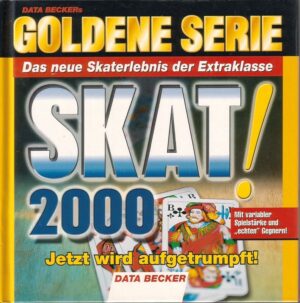Retro Replay Review
Gameplay
At the heart of Thief: The Dark Project lies an uncompromising emphasis on stealth over direct combat. Playing as Garrett, the master thief, you are encouraged to use the environment—shadows, alcoves, and darkness—to stay hidden from patrolling guards. A “light gem” in the HUD dynamically reflects your visibility, rewarding careful movement through dim corridors and penalizing you when you stray into well-lit areas. Sound also plays a critical role: different flooring materials, such as wood, carpet, or metal grates, produce varying noise levels underfoot.
(HEY YOU!! We hope you enjoy! We try not to run ads. So basically, this is a very expensive hobby running this site. Please consider joining us for updates, forums, and more. Network w/ us to make some cash or friends while retro gaming, and you can win some free retro games for posting. Okay, carry on 👍)
The array of specialized equipment available to Garrett deepens the tactical possibilities. Lockpicks allow access to barred doors and treasure chests, while the blackjack can silently knock guards unconscious without raising an alarm. Garrett’s bow, stocked with a variety of arrows—water to extinguish torches, moss to muffle footsteps, rope to reach hidden ledges, and fire to clear obstacles—encourages creative problem-solving. Flash bombs can temporarily blind foes, and explosive mines can be laid as traps, adding layers of strategy to each mission.
Thief’s level design is remarkably open, giving players multiple approaches to every objective. Whether you slip through a broken window, ascend a rain-slicked rooftop, or tunnel under floors, each path offers risks and rewards. Difficulty settings not only adjust guard numbers and alertness but also introduce additional goals—such as completing a mission without harming any living creature—adding replay value. Loot collected during each heist can be spent on more gear, so careful exploration and itemization are consistently rewarded.
Graphics
When Thief: The Dark Project first launched, its graphics represented a cutting-edge fusion of medieval and early-industrial motifs. Stone walls, candlelit corridors, and rusted metal gates all share a cohesive style that reinforces the city’s grim, Gothic atmosphere. Even today, the interplay of flickering torchlight against damp stone creates an immersive world where shadows are both a tool and a constant threat.
While polygon counts and texture resolutions are modest by modern standards, the game’s art direction shines through. Architectural details—vaulted ceilings, ornate ironwork, and cluttered merchant stalls—paint a vivid picture of a living, breathing city. Light sources cast dynamic shadows that pulse and stretch across surfaces, giving life to otherwise static environments. These shadow effects aren’t mere decoration; they are integral to gameplay, making visualization and memory of level layouts crucial for staying undetected.
Complementing the visuals is a minimalist HUD design. Aside from the light gem and your health indicator, there’s little on-screen clutter to break immersion. Inventory screens are functional yet stylized to resemble a leather-bound journal. This restraint in interface design keeps the focus on environmental cues: the glint of gold coins, the sway of a hanging lantern, or the flicker of a distant guard’s torch.
Story
Thief: The Dark Project introduces Garrett as a survivor of the streets who is taken in by the secretive Keepers. Although they teach him the arts of stealth and thievery, Garrett chafes under their strict code and eventually strikes out on his own. Driven by personal gain rather than any lofty principles, he sets out to relieve the City’s nobles, merchants, and religious orders of their most precious treasures.
The setting—simply known as “the City”—is a richly drawn locale where medieval superstition meets burgeoning industrial innovation. Factions such as the Hammerites, a militant religious order, clash with the pagans and the mercantile elite, creating a web of intrigue that Garrett exploits. As you navigate ornate manor halls, cathedral crypts, and smuggler’s tunnels, the tension between these groups unfolds in subtle environmental storytelling: guarded ledgers, scattered relics, and whispered rumors overheard in dark corners.
The narrative unfolds mission by mission, relying on written briefings and atmospheric level design rather than lengthy cutscenes. This approach keeps the player firmly in control, letting you interpret Garrett’s motives and relationships with other characters. Although plot twists are sparse, the gradual reveal of a sinister force lurking beneath the City adds a supernatural edge that keeps the story compelling and motivates you to delve deeper into each shadowy district.
Overall Experience
Thief: The Dark Project remains a landmark title for stealth enthusiasts. Its deliberate pacing, emphasis on careful planning, and rich atmospheric detail deliver a distinct sense of tension and reward. Each mission feels like an intricate puzzle, and success hinges on mastering the game’s light-and-shadow mechanics while making clever use of Garrett’s toolkit.
Modern players may find the controls and visuals dated, but the core gameplay holds up remarkably well. Community-made patches and high-resolution texture packs can refresh the presentation, and the game’s influence on later stealth titles—from the Splinter Cell to Dishonored series—is unmistakable. If you appreciate slow-burn challenges over run-and-gun action, Thief offers a deeply satisfying, almost meditative experience.
For anyone seeking a stealth game that prioritizes atmosphere, tension, and player agency, Thief: The Dark Project is a must-play. While it may require patience and a willingness to learn its unique systems, the payoff is a masterclass in immersive, strategic thievery. Slip into Garrett’s gloves, extinguish your torches, and prepare to vanish into the darkness—your next great heist awaits.
 Retro Replay Retro Replay gaming reviews, news, emulation, geek stuff and more!
Retro Replay Retro Replay gaming reviews, news, emulation, geek stuff and more!









Reviews
There are no reviews yet.